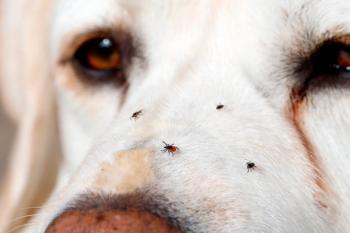
Manatees eyes offer glimpse at health
Gainesville, Fla. — Researchers at the University of Florida (UF) studying the thick tear film of Florida manatees aim to prove whether the uncommonly thick tear film aids in disease protection.
GAINESVILLE, FLA. — Researchers at the University of Florida (UF) studying the thick tear film of Florida manatees aim to prove whether the uncommonly thick tear film aids in disease protection.
Scientists contend that tear analysis in conjunction with standard tests may provide helpful information for evaluating the manatees' immune system and thus determining approaches for rescuing, treating and rehabilitating these large sea mammals.
A recent study analyzing the large amount of blood vessels present in the manatee's cornea provides the framework for this research. Don Samuelson, PhD, a professor of ophthalmology in the Marine Mammal Medicine program at UF's College of Veterinary Medicine, says blood vessels may move into the cornea to provide oxygen because the thick tear film prevents oxygen from reaching it.
Scientists are exploring connections between this protective film and the blood vessels in the cornea, which studies prove form in the early stages of development.
"With that in mind, we are examining the tears to see what they exactly consist of, particularly with regard to the anti-infectious component," says Samuelson. "This may eventually be an opportunity to examine an individual manatee's state of health with regard to their immune system by analyzing their tears."
Newsletter
From exam room tips to practice management insights, get trusted veterinary news delivered straight to your inbox—subscribe to dvm360.






